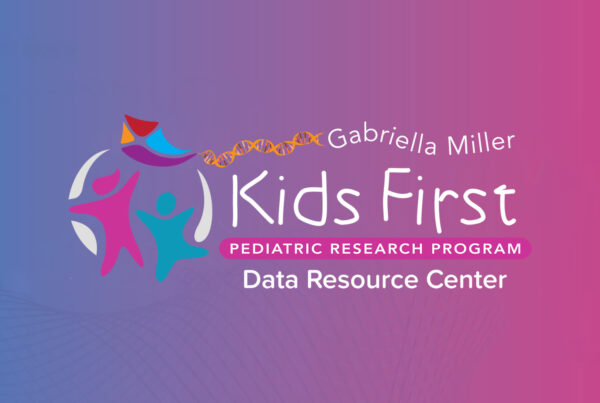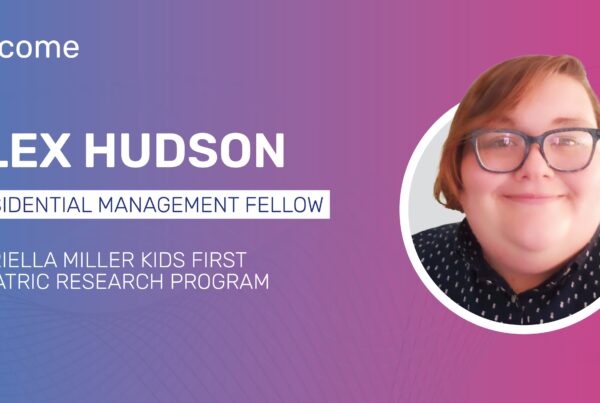Kids First DRC Poster at the NIH and NCATS Rare Disease Day
Rare Disease Day takes place on the last day of February each year. The main objective of Rare Disease Day is to raise awareness amongst the general public and decision-makers about rare diseases and their impact on patients’ lives. Since Rare Disease Day was first launched by EURORDIS and its Council of National Alliances in 2008, thousands of events have taken place throughout the world.
On February 28, 2019, in the Natcher Conference Center at the main campus of the National Institutes of Health (NIH) in Bethesda, MD, the National Center for Advancing Translational Sciences (NCATS) and Clinical Center sponsored an all-day conference and expo to raise awareness about rare diseases, the people they affect, and the NIH research collaborations under way to address scientific challenges and to advance new treatments.
At this event, which saw roughly 500 patient advocates, families, agency representatives, researchers, and clinicians in attendance, the NIH Common Fund-supported Gabriella Miller Kids First Data Resource Center (Kids First DRC) presented a poster to highlight collaborative research opportunities for childhood cancer and structural birth defect researchers, as well as genomic and phenotypic data, and other features available within the Kids First Data Resource Portal.
“What’s wonderful about an event like this is that it serves as a reminder of the incredible wealth of talent and knowledge that exists within the rare disease community that is striving to find cures and improved treatments for individuals who experience rare and often life-threatening conditions. Rare Disease Day also reminds us that through open scientific collaboration and continued patient, foundation, and institutional support, we can accelerate research and improve lives across the country and beyond,” said Adam Resnick, PhD of Children’s Hospital of Philadelphia and Principal Investigator of the Gabriella Miller Kids First Data Resource Center.
Those attending the NIH’s Rare Disease Day had the opportunity to meet with representatives from the NIH, Dr. Resnick, and Kids First DRC Administrative and Outreach Core (AOC) Lead Jena Lilly, MS, CCRC, to learn more about the collaborative research opportunities and data available through the Kids First Data Resource. Attendees were also able to ask questions and find out how they can register and access data for their analysis.
The Kids First DRC is a collaborative pediatric research effort with the goal of understanding the genetic causes and links between childhood cancer and structural birth defects. The DRC is charged with:
- Developing data-driven platforms to integrate large amounts of genomic and clinical data from different disease types
- Empowering the collaborative discovery, engagement, and necessary partnerships across disease communities that are crucial to advance pediatric research
- Enabling rapid translation to personalized treatments for patients diagnosed with childhood cancer or structural birth defects
- Accelerating discovery of genetic causes and shared biologic pathways within and across these conditions
There are over 839TB of data files from 10 datasets, comprised of genomic data from 2,789 families and 7,835 childhood cancer and structural birth defect patient study participants within the Kids First Data Resource Portal. Genomic data in the Portal is aligned with Human Genome Reference HG38 and also contains comprehensive phenotypic data that is harmonized using community-based ontologies and standards such as the Human Phenotype Ontology (HPO) and/or the NCI Thesaurus. The DRC’s phenotypic harmonization efforts allow for easier analysis across different datasets and disease types, both within the Data Resource Center and across other genomic datasets.
To learn more about the data available, and to register to use the Kids First Data Resource Portal, visit https://kidsfirstdrc.org/support/getting-started/.










